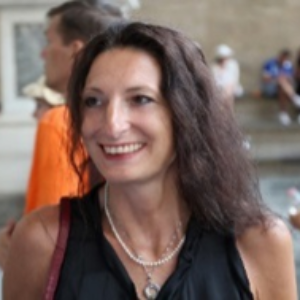Title : Reactants-induced dynamic responses of the surface of heterogeneous catalysts monitored by microcalorimetry beyond adsorption
Abstract:
For a detailed understanding of complex reaction networks we need thermodynamic data of high accuracy and information about the nature of the catalyst surface during reaction. Therefore, we quantitatively study the adsorption, activation, and reaction phenomena close to the reaction parameters. Furthermore, we simulate reactants-induced responses of the surface via adsorption/desorption cycles in order to stepwise create an active surface, and thus can get new insights into the dynamic behaviour of the surface. Since perhaps only a minor fraction of all surface atoms form active sites, the quantification requires a very sensitive analytical method. We focus on microcalorimetry beyond adsorption. This is a direct method to determine the number, strengths and energy distribution of adsorption sites, as well as adsorption constants and the active surface area. To facilitate the correlation of microcalorimetric results with the catalytic performance, a molecule similar to the reactant is used. Tads. is chosen lower than Treact. to try to separate the adsorption and activation process from the catalytic reactions.
In this work, we present i) i) CO chemisorption cycles on a Ni/MgAl oxide catalyst for dry reforming of methane (DRM) ii) propane and ethane adsorption/desorption cycles on a MoV oxide catalyst for oxidative dehydrogenation of alkanes and iii) CO chemisorption on Ir based catalysts for oxygen evolution reaction (OER).
We impressively show how experiment and theory can be in harmony. For example, apparent activation energy from kinetic experiment, differential heat of adsorption and amount of propane adsorption sites from microcalorimetry in combination with DFT calculations resolves different degrees of Vx Oy oligomerization. Furthermore, Ir-based catalysts are promising materials to electrocatalyze the oxygen evolution reaction in acidic media. To investigate the electronic structure of iridium metal, rutile-type IrO2 and an amorphous IrOx, synchrotron-based X-ray photoemission and absorption spectroscopies were combined with theoretical calculations. Furthermore, we applied CO chemisorption experiments at 40°C using microcalorimetry under reaction conditions to identify surface differences between active amorphous IrOx and inactive crystalline IrO2 materials. Only the active amorphous Ir oxide shows average differential heats of 125 kJmol-1 due to the CO oxidation. The measured differential heats of reaction agree nicely with those calculated for the reaction enthalpies of CO(g) with electrophilic OI- species.
Audience Take Away:
- Many of the reaction networks are extremely complex and hence are very difficult to dissolve.
- For a better understanding of the complex microkinetics we need quantitative data of high accuracy. Moreover, quantitative data provide a basis for theoretical modeling.
- It is very important to characterize the fresh and post reaction state of the catalysts in order to observe changes, and thus can get new insights into the dynamic behaviour of the surface.
- For the main task, to facilitate a structure reactivity relationship we have to combine the results from the catalytic test with qualitative/quantitative analytical data close to the used reaction parameters.
- The aim should be to obtain experimental and theoretical data to better understand the process. It also serves to validate data and improve the applied models.



